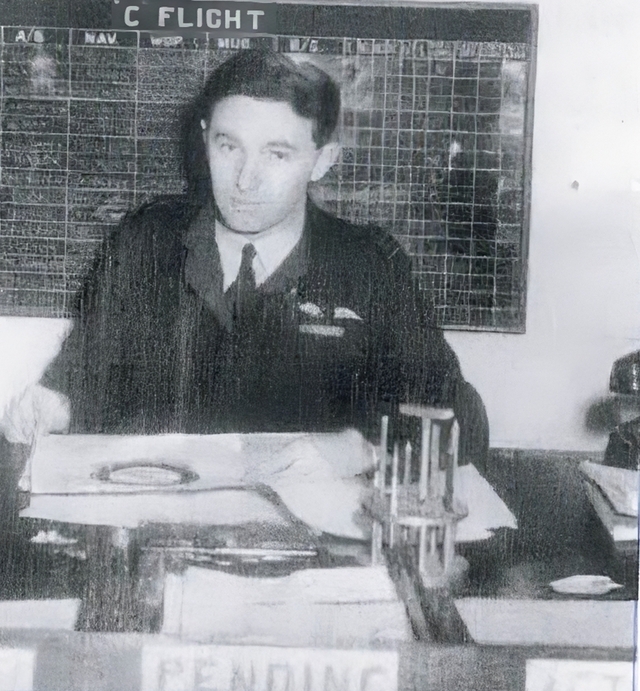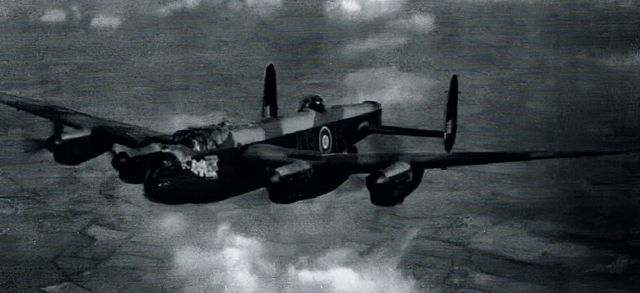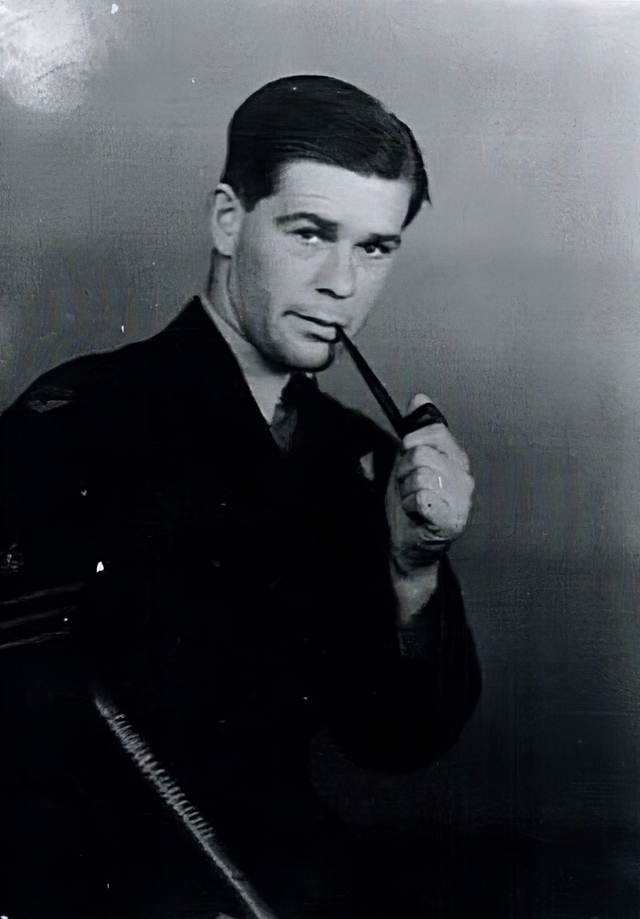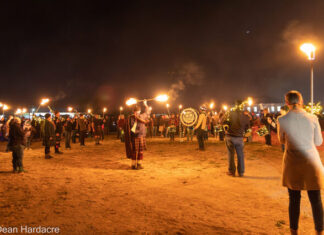The story of Mortimer Car Clark was about the eldest son of the Clarks of Talgai homestead. A written tribute to John, the youngest of the Clark four heroes is told, and like Mort’s award of the Military Medal in World War I, John’s courage and commitment were demonstrated in World War II over the skies of Europe with the Lancaster Bomber Squadron No 460. Here, he surpassed his older brother, by being decorated with the Distinguished Flying Cross and Bar, and the Air Force Cross.
John Howard Clark was also born on the Talgai homestead at Hendon on 12 July 1914, the youngest of the 11 children born to George and Gertrude Clark.
He grew up on the farm and attended Scots College for his early education from 1923 to 1926 before his parents sent him to be a boarding student at Melbourne Grammar School, to complete his senior education.
On his return to Talgai, John worked on the farm until 1939, until deciding to go to England on board the Orion and arrived there just as the Battle of Britain raged in the skies over London. It was here that John’s life changed forever.
With England on a war footing, John decided to stay in England and enlist in the Royal Air Force Volunteer Reserve in 1940, and so, as he had the education standards for aircrew training, was immediately accepted and sent to a flying training base just outside of London.
It was here that he met a nurse called Lillian, who was working on the base with the Civil Defense Nursing Service, and after a brief romance, they were married.
On completion of his pilot’s course, John was posted to Binbrook in Lancashire to join No. 460 Lancaster Bomber Squadron. In his time there, John’s flying skill and courage saw him complete two 30 combat missions against the enemy over Germany and Turin.
In June 1942, he took part in the first 1000 bombing raids over Germany and between June 1942 and September 1944, survived the high casualty figures of Bomber Command which lost five out of 17 planes on one of his missions and had a casualty rate of 54 per cent.
On 22 October during a raid on the industrial region of Kassel, John and his crew, which incidentally comprised of the famous one-legged Pilot Officer R.C.Dunstan, who was the rear gunner. After dropping their bombs and turning to head home John’s plane was attacked by a German night fighter and here is what happened:
“During the raid on Kassel, just as the aircraft had dropped its bombs, the night fighter attacked. Its cannon shells shot away the rudder controls and damaged the aircraft’s landing system. One shell tore through the rear turret and exploded inside. As it passed through it tore the right sleeve of Dunstan’s flying suit as far through as his shirt, but did not even scratch him. One shell smashed through the rear turret as it exploded, and other members of the crew had to cut the turret door away before Dunstan could be released before landing”.
For this highly successful raid on Kessel, John was awarded the Distinguished Flying Cross (DFC), which said:
“ Flight Lieutenant John Howard Car Clark, R.A.F.V.R. of No 460 (RAAF) Squadron. This officer piloted an Aircraft which dropped its bombs on Kassel. Soon after leaving the target, the aircraft was engaged by a fighter and sustained much damage. The bomber became difficult to control but Flight-Lieutenant Clark resolutely held to course. By a superb effort he reached an airfield in this country and effected a masterly landing. This officer displayed exceptional skill and determination, and was largely responsible for the safe return of the aircraft and crew.”
John was also awarded a Bar to his DFC on 8 December 1944, and later, the Air Force Cross (AFC) on 1st. January 1946, for his exceptional duty as a flying instructor.
It should also be mentioned here that John’s rear gunner, Robert Dunstan was awarded the Distinguished Service Order for his “courage, determination and unwavering commitment over 30 missions. His legacy endures as a beacon of courage and honour”. (Robert Dunstan was a former 18 year old army veteran with the 2/8 Field Company, Royal Australian Engineers, who lost his leg in action at Tobruk when his left leg required amputation after his knee was shattered by an Italian artillery shell. Undeterred by this handicap, he was later accepted by the RAAF in 1942 for air gunner training while wearing an artificial leg, and after gunnery training, joined 460 Squadron).
After the war John and Lillian moved back to Australia with their two children George and Pam, both born in England. They also raised two more children, John and Roger, in Australia.
They opened a business called Roseville Cellers and a supermarket. With Lillian assisting, they specialized in boutique wines, imported wines, spirits, champagne, ciders and beer.
They soon became a respected business couple. John became an excellent and keen gardener. He was also an above-average tennis player who enjoyed this game for years until his health broke down with Parkinson’s disease.
His beloved wife Lillian passed away in August 2004 with John also passing away a few weeks later, on 11 October 2004. John was 90 years of age at the time of his death and now lies at rest in Macquarie Park Cemetery and Crematorium at North Ryde, Sydney.
John Howard Car Clark will certainly go down as one of Australia’s real heroes as were all those intrepid flyers of Bomber Command. He embodied the Anzac spirit of courage and commitment through his two tours of duty on 60 missions carried out with No. 460 Squadron. and by his skilful flying, he managed to bring his crews home safely.
This Anzac Day we salute you and forever remember.









